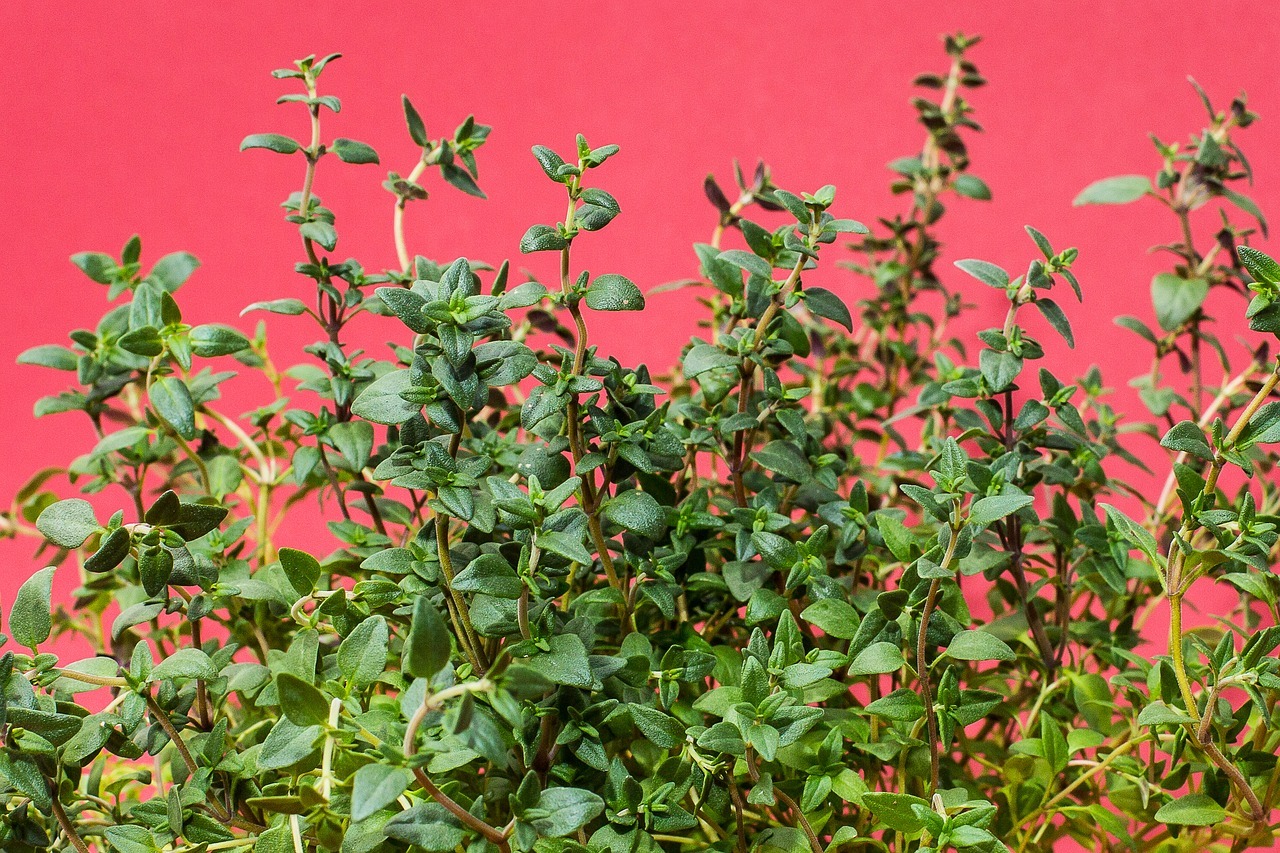Thyme has been used since ancient days for a variety of applications. It is aromatic and it has a distinctive scent. There are several species that are used for food and medicinal purposes, including Thymus citriodorus which has a citrusy flavor and scent, T. herba-barona which has a caraway scent, and T. vulgaris which is the common culinary version.
Health Benefits and Side Effects
Thyme contains thymol, which has some positive effects on the human body, as well as some other compounds. These include:
- Infection prevention of both fungal and viral types, which aids the immune system,
- Respiratory system support, as an anti-inflammation substance and expectorant, as a steam treatment or tea,
- Antioxidant concentrations in its phenolic compounds boost overall health,
- Circulation improvement by encouraging red blood cell production,
- Heart health, through the minerals, vitamins, and antioxidants, including potassium and manganese,
- Blood pressure reduction by reducing stress on blood vessels,
- Vision health due to vitamin A and carotenoids,
- Acne treatment, athlete’s foot treatment, and skin health booster due to antibacterial properties,
- Muscle cramp relief, including menstrual cramps and muscle spasms, probably due to its potassium content,
- Sleep improvement with a calming effect,
- Anemia reduction due to a high iron content,
- Boosts immunity through high levels of vitamin C,
- Reduces stress due to vitamin B6 content.
Excess intake can cause stomach upset.
The oil, which is more concentrated, may cause such negative side effects as allergic reactions, dizziness, headache, asthma, conjunctivitis, muscle weakness, and indigestion or stomach upset. Thyme oil should not be ingested, and topical usage should include a carrier oil. It may cause slower clotting of blood, if large amounts are ingested; avoid if using blood thinners. It may have an estrogen-like effect.
Food and Nutrition
One tablespoon (about 2.7g) of dried thyme leaves provides about 7.5 calories, .2g fat, 1.5mg sodium, 1.7g carbohydrates, and .2g protein, plus potassium, vitamins A, B, C, D, E, and K, calcium, iron, magnesium, phosphorus, zinc, copper, manganese, and selenium.
Thyme goes well with vegetables, pork, poultry, and soups. It melds well with citrus flavors. Combined with other herbs, such as parsley, sage, and rosemary, it makes an excellent spice mix to add to breads, soups, and other recipes. It goes well with tomatoes and tomato-based sauces. It adds flavor to mashed potatoes. It can give lemonade a twist. It goes as well with sweet as savory, and can be used to season sweet potatoes and cookies, or pork loin and crackers with equally delicious results.
Other Uses
Some find that thyme essential oil can stimulate the growth of hair, so it may help with thinning hair. It may also help to prevent dandruff on the scalp.
Researchers belonging to the American Mosquito Control Association found that the compounds in thyme will kill the Tiger mosquito larvae, preventing Tiger mosquitoes, which are known to spread dengue fever, yellow fever, and chikangunya fever.
Thyme kills intestinal worms including roundworms, tapeworms, and hookworm.
Thyme oil is used in perfumes and soaps.
Growing
Thyme is a shrub that stays low to the ground and can be annual anywhere, or perennial in warmer climates. Its flowers are tiny and a tube-like shape that tend to be white or purple. Bees love the flowers, and they aid them in producing delicious honey.
Thyme prefers full sun and hot temperatures. Indoor plants should be in a window that gets a lot of sunshine. It is drought tolerant and does not like much water. It can be difficult to start from seeds because thyme germinates slowly and unevenly, but plants can usually be purchased from nurseries or started from cuttings.
Thyme plants can be put into soil that is 70 degrees Fahrenheit or warmer. This often occurs a couple weeks before the last frost. They should be planted 9-24 inches apart, depending on species. They will grow up to a foot tall. They grow well near tomatoes or cabbage. Like rosemary, a potted plant will need little watering and a bright, sunny window.
When the soil is completely dry, add water. Prune in spring or summer – while harvesting is a good plan. Mulch after the ground freezes, in areas where it does. When plants get to be 3 or 4 years old, divide them or replace them to reduce the woodiness and get more flavorful leaves.
To get a cutting, cut three inches from the end of a stem and add rooting hormone to the cut part. Plant it in sand or vermiculite; it should root within six weeks. Once roots have started, place it into a small pot to allow it to form a root ball, then transplant into its permanent home.
The best time to harvest is just before it flowers. Harvest the 5-6 inches of growth at the top of the plant. Once the dew is gone is the best time to pick the leaves; do not wash unless necessary, as washing reduces the natural oils. Thyme can be trimmed regularly but be sure to leave five inches or so to keep it thriving.
Store in the refrigerator, wrapped lightly, or dry by hanging in a warm, well-ventilated area or by setting on a tray. Store in an airtight bag or container for up to two years. Crush when ready to use. Leaves can also be frozen.

